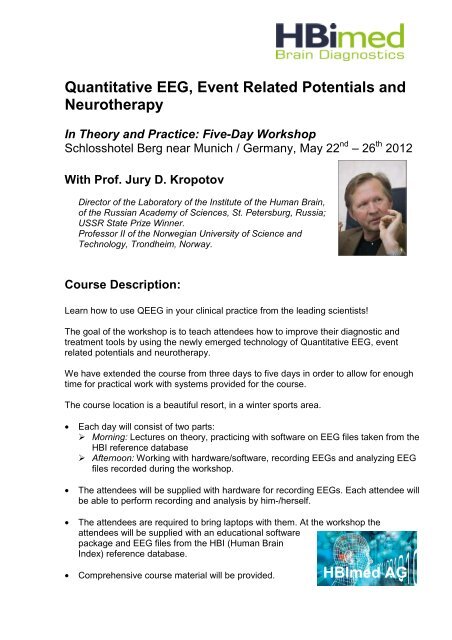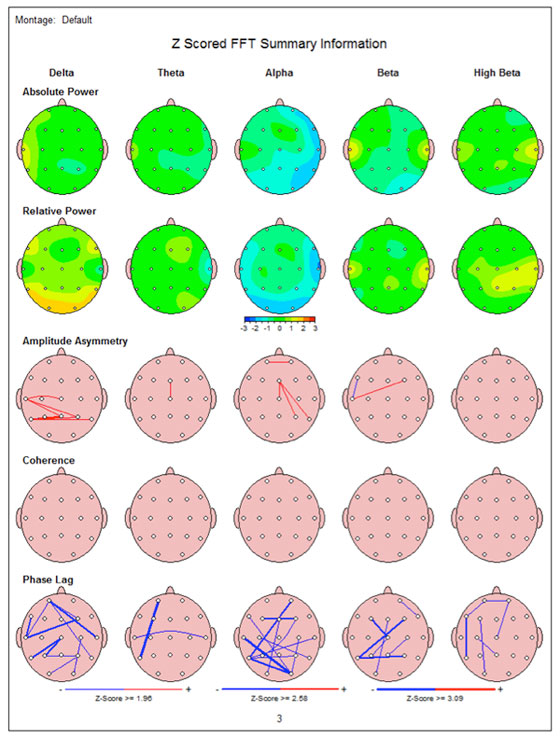
Two important conditions would have to be met for such a test to be useful. It presents a holistic approach to quantitative EEG from. You can read a review of an interesting study on this issue at For these reasons an accurate and objective diagnostic test for ADHD could be of value in many clinical situations. History: From EEG to Quantitative EEG (QEEG) In 1929 Hans Berger reported in an publication his observations on what he termed ‘das Elektrenkephalogramm’ (Berger, 1929), which would become the seminal paper highlighting the beginning of research on the human electroencephalogram also abbreviated as EEG. This book covers various quantitative methods for preprocessing and analyzing human EEG signals. Complicated mathematical and statistical analysis of EEG activity is now a primary tool in neuroscience. The raw measure of brain activity is converted using mathematical equations into a form which can be compared to a normative database. This process is called quantitative EEG or qEEG. What Is A QEEG A QEEG assessment is a recording of brain activity (the electroencephalogram) from across the whole scalp using a number of sensors, usually 19. In fact, many families do not pursue treatment for ADHD because the the absence of objective evaluation procedures leads them to question the diagnosis. We can see your brain much more clearly when we use sophisticated computerized analysis tools to study your brain’s electrical activity. Second, although AAP guidelines indicate that specific diagnostic tests should not be routinely used, many parents are concerned about the lack of objective procedures in their child’s evaluation. While most ADHD experts would agree that no single test could or should be used in isolation to diagnose ADHD, there are several important reasons why the availability of an accurate objective test would be useful.įirst, many children do not receive a careful and comprehensive assessment for ADHD but are instead diagnosed with based on evaluation procedures that are far from optimal.

In fact, recently published ADHD evaluation guidelines from the American Academy of Pediatrics (AAP) explicitly state that no particular diagnostic test should be routinely used when evaluating a child for ADHD. The utility of quantitative electroencephalography (qEEG) as such a marker in acute stroke has not been intensively studied.

Like all psychiatric disorders, ADHD is diagnosed based on the presence of particular behavioral symptoms that are judged to cause significant impairment in an individual’s functioning, and not on the results of a specific test. The study of Quantitative EEGs and Neurofeedback offer a window into brain physiology and function via computer and statistical analyses, suggesting innova.


 0 kommentar(er)
0 kommentar(er)
